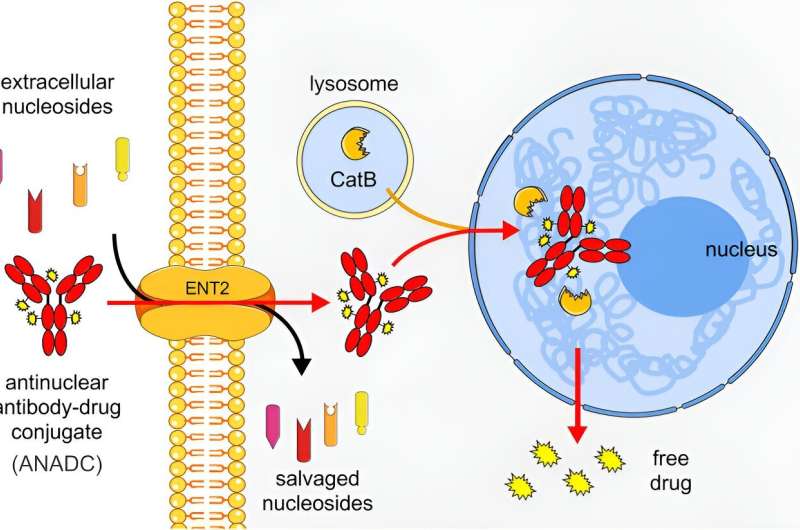This article has been reviewed according to Science X's editorial process and policies. Editors have highlighted the following attributes while ensuring the content's credibility:
fact-checked
peer-reviewed publication
proofread
Scientists develop potential stealth cancer therapy

Sneaking by cancer's defenses, by disguising tumor-fighting antibodies inside the molecules cancer uses to nourish tumor growth, is the basis of a novel therapy from Yale Cancer Center researchers at the Yale School of Medicine (YSM).
As explained in a paper published July 15 in ACS Central Science, the Trojan-horse therapy proved effective against several cancer tumor types in the laboratory, including brain tumors that can be difficult to reach with therapy due to the protective blood-brain barrier.
The successes can be attributed to therapy-carrying antibodies that have been strategically redesigned from lupus to take advantage of their ability to target tumors while eliminating their lupus effects. Researchers call them "antinuclear antibodies" and they hitch a secret ride on the nucleic acid molecules that cancer grabs from its environment to build new DNA and help tumors grow. Once inside the tumor, the antibodies effectively drop their disguises and fire their antinuclear missile cargoes to kill the cancer cells.
Unlike other therapies that pair traditional antibodies and chemotherapy, the antibodies in this therapy are not circulating and looking for tumor cell surface markers such as HER2 or PD-L1 to know where to attack, but are instead riding unnoticed into the tumor environment. A likely welcome effect of this very targeted therapy is a reduction in toxic side effects experienced by patients when less precise therapies kill off healthy tissue.
"Instead, the antinuclear antibody-drug conjugates [ANADCs] seek out the DNA exhaust floating around tumors, which means they can track down tumors even if the tumors are missing specific surface receptors and are invisible to other more conventional antibodies," said James Hansen, MD, MS, senior author of the study, member of Yale Cancer Center, and radiation oncology chief of Yale's Gamma Knife Program.
The ANADCs were effective against mouse models of breast cancer and colon cancer, and even improved survival in mouse models of glioma, Hansen said. Efforts are now underway to advance this therapy to testing in the clinical trial setting.
"By targeting extracellular nucleic acids instead of surface receptors, ANADCs can basically target any necrotic tumor regardless of type, making it a tumor-agnostic therapy" and therefore promising for other diseases as well, Hansen said.
"This technology gives us the opportunity to use antinuclear antibodies to deliver drugs, proteins, or gene therapies to tumors or other sites of damage associated with increased DNA release, such as heart attacks, strokes, or traumatic injuries," said Hansen.
More information: Fei Cao et al, Cathepsin B Nuclear Flux in a DNA-Guided "Antinuclear Missile" Cancer Therapy, ACS Central Science (2024). DOI: 10.1021/acscentsci.4c00559

















